Key takeaways
- Sampling techniques such as chopping, pitch shifting, and layering enhance creative expression and allow artists to fuse diverse musical styles.
- Sampling serves as a means of cultural preservation and emotional connection, helping artists create music that resonates with audiences.
- Essential tools for sampling include Digital Audio Workstations (DAWs), sampler plugins, and audio interfaces, which streamline the creative process.
- Reflecting on the original artist’s intent and ensuring legal compliance are crucial lessons learned during the sampling journey.
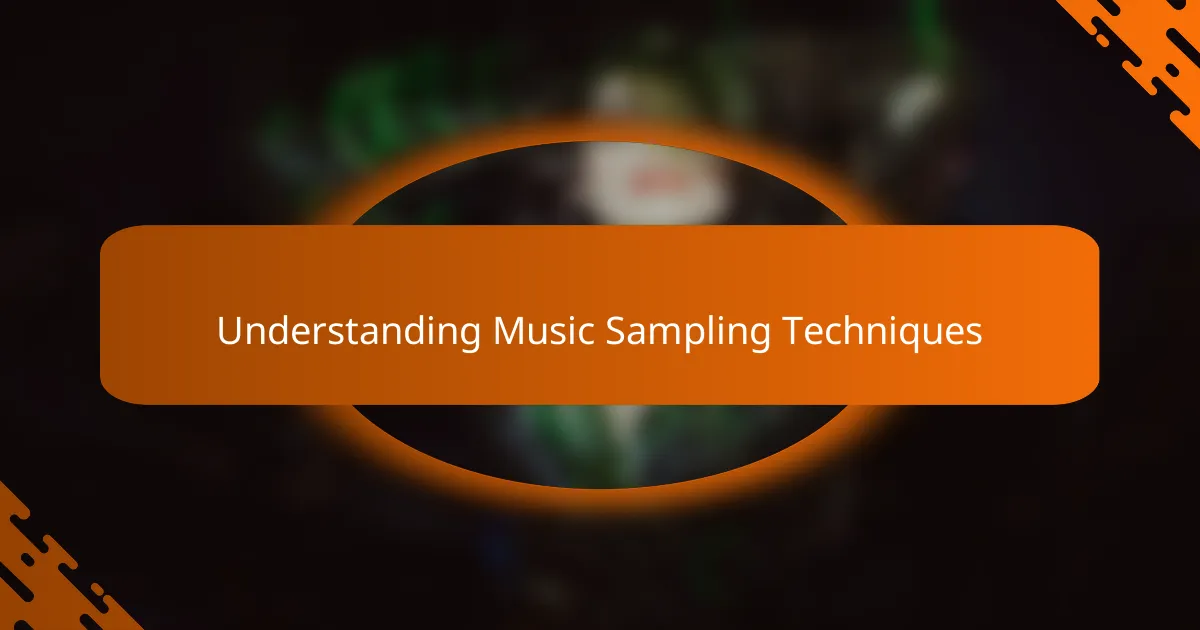
Understanding Music Sampling Techniques
Sampling music is more than just borrowing a sound; it’s about capturing a feeling and recontextualizing it. I remember the thrill of digging through old vinyl records, searching for that perfect snippet that would resonate with my project’s vibe. Each find transported me back to the era it came from and began to inform my creative direction.
When it comes to sampling techniques, here are some key points I’ve discovered through my own experience:
- Chopping: Cutting a longer sample into shorter sections to create a new rhythm and melody.
- Pitch Shifting: Adjusting the pitch of a sample to fit your track’s key, which can add a unique flair.
- Looping: Repeating a section of a sample to create a repetitive background that draws listeners in.
- Layering: Combining multiple samples to enrich the sonic texture of your music.
- Time Stretching: Manipulating the speed of a sample without affecting its pitch, allowing for creative tempo changes.
Each of these techniques has been a part of my creative journey, enabling me to transform sounds into something distinctly mine.
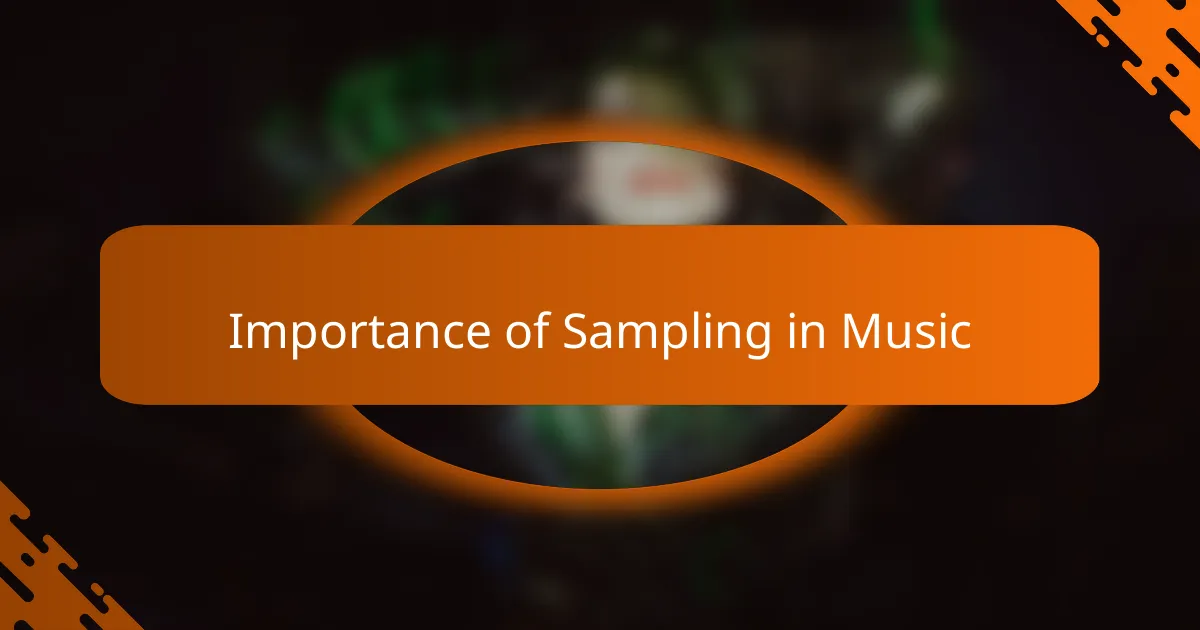
Importance of Sampling in Music
Sampling in music is more than just a technique; it’s a powerful form of artistic expression. As I dove into sampling for my project, I realized that it allows musicians to pay homage to the past while crafting something entirely new. I still remember the thrill of discovering a particular jazz record that perfectly complemented my sound and how incorporating that sample sparked creativity in my own work.
The beauty of sampling lies in its ability to blend diverse genres and cultures. Every sample tells a story, and using it can evoke emotions and connections that original compositions sometimes miss. I often think of how a simple beat can bring back memories or transport listeners back to a joyful moment in their lives.
Here are some key points to consider about the importance of sampling in music:
- Cultural Preservation: Sampling keeps the essence of musical history alive, connecting different generations.
- Creative Fusion: It encourages unique blends of genres, leading to innovative sounds.
- Emotional Resonance: Samples can evoke strong feelings and memories in listeners.
- Accessibility: Sampling offers opportunities for emerging artists to create professional sounds without extensive resources.
- Collaboration: It fosters a sense of community among musicians by respecting and reinterpreting each other’s work.
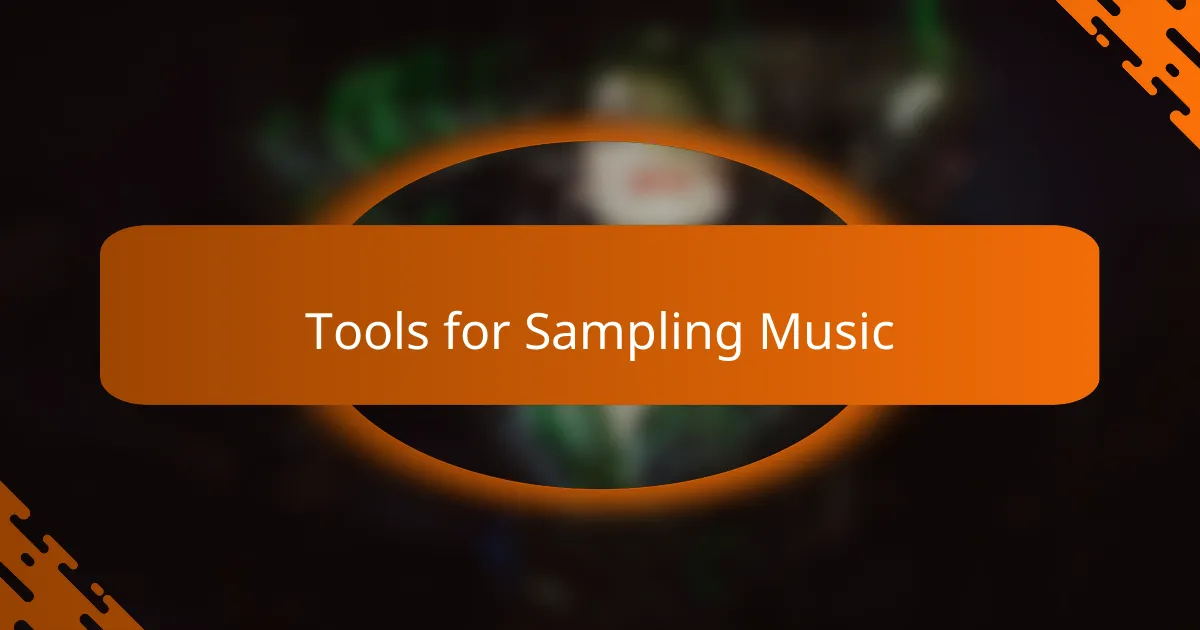
Tools for Sampling Music
When I set out to sample music for my project, I quickly realized that the right tools could make or break my creative process. I remember feeling a mix of excitement and intimidation as I explored various software and hardware options. My go-to tools became integral to my workflow, allowing me to capture the essence of the sounds I wanted in no time.
Here’s a list of some essential tools I found invaluable for sampling music:
- Digital Audio Workstations (DAWs): Software like Ableton Live and Logic Pro X that allow for intuitive sampling and arrangement.
- Sampler Plugins: Instruments such as Kontakt and Battery that provide a wide range of sounds and manipulation options.
- Field Recorders: Devices like the Zoom H4n to capture live sounds and unique ambient textures.
- MIDI Controllers: Tools such as the Akai MPK Mini that provide tactile control over samples and effects.
- Audio Interfaces: Quality interfaces like Focusrite Scarlett ensure your recordings are clean and professional.
Each of these tools enhanced my sampling experience, helping me forge a deeper connection with the music I was creating.
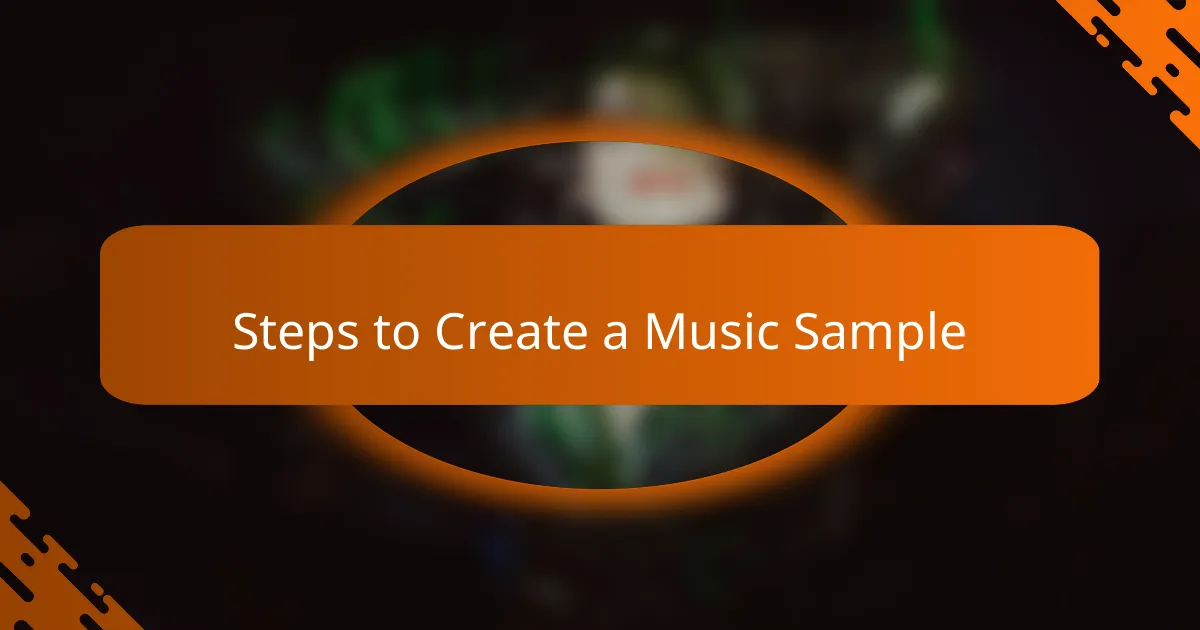
Steps to Create a Music Sample
When I set out to create a music sample for my project, I found that each step was essential to capture my artistic vision. I often started by listening to various genres to find inspiration, which sparked new ideas that I hadn’t considered. This exploratory phase was not just about selecting sounds; it was an emotional journey that helped me connect with what I wanted to express musically.
Here’s a simple breakdown of the steps I take during this process:
- Explore Genres: Dive into different musical styles to gather fresh ideas.
- Identify Key Elements: Focus on the instruments and sounds that resonate with your theme.
- Record Original Sounds: Use a microphone or software to capture unique sounds relevant to your project.
- Experiment with Loops: Layer and manipulate those sounds to create a dynamic sample.
- Refine Your Sample: Edit and adjust the elements, ensuring they cohesively fit together.
- Seek Feedback: Share your sample with trusted friends or collaborators for constructive critique.
These steps have always fueled my creativity and ensured I remain true to my sound.
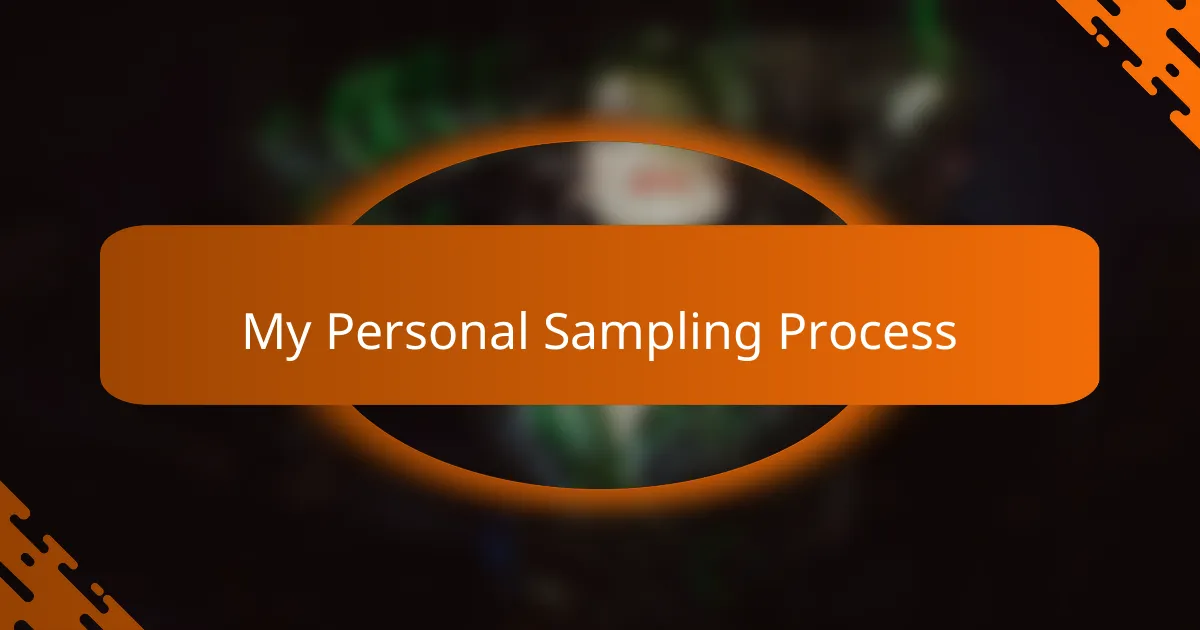
My Personal Sampling Process
Sampling music for my projects has always felt like a deeply personal journey. Every track I choose resonates with a part of me, whether it’s a nostalgic hit from my childhood or an obscure gem I stumble upon late at night. I remember the thrill of discovering a jazz record that transported me to another era; its smooth trumpet riffs became the backbone of a recent composition I created.
To refine my sampling process, I follow a series of steps that help ground my creativity while ensuring I respect the original work:
- Exploration: I dive into various genres, allowing my moods to guide me.
- Contextual Listening: I think about how a sample fits within my track’s theme, sometimes even envisioning a story behind it.
- Experimentation: I regularly manipulate samples, tweaking pitches and chopping loops to find unique sounds that resonate with my vision.
- Documentation: I keep a log of all samples I’ve used and their sources, helping me track my creative evolution.
- Intentionality: I ask myself what emotions I want to evoke and select samples that enhance that feeling.
Having this structured yet flexible approach makes sampling feel intuitive, almost like chatting with an old friend through music.
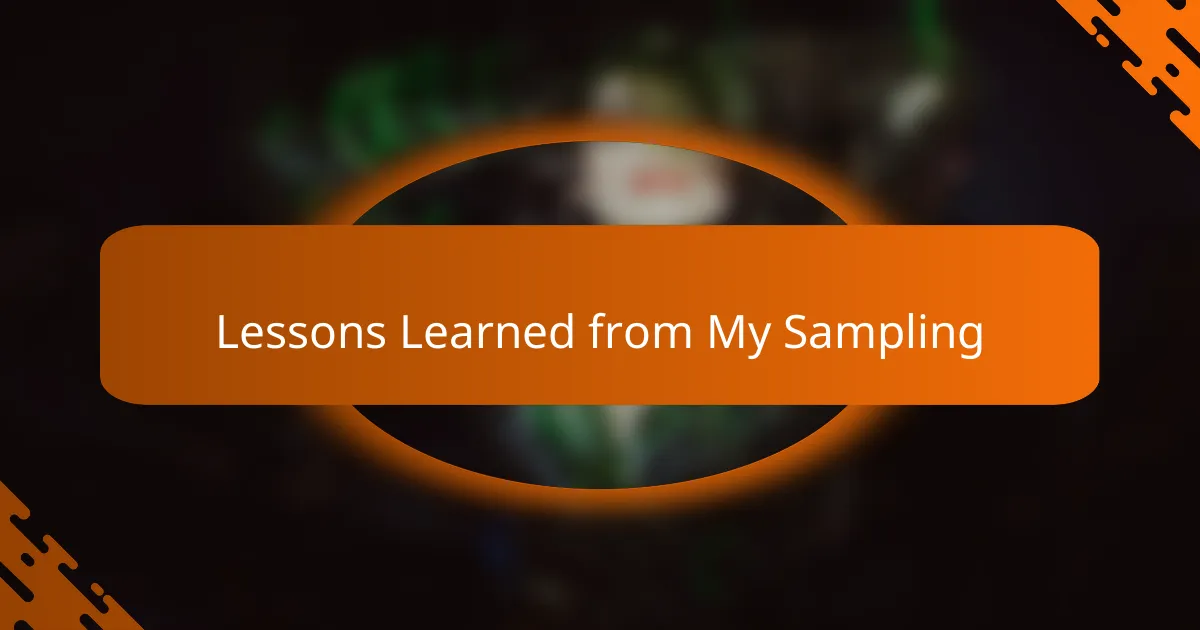
Lessons Learned from My Sampling
Sampling music for my project taught me invaluable lessons that I cherish to this day. One key insight was the importance of respecting the original artist’s work; it’s not just about the sound but also about the emotion and story behind it. When I first sampled a track, I didn’t realize how deeply I was altering its intent, which led to a valuable conversation about artistic integrity.
Another lesson was the power of experimentation. For instance, my early attempts at blending samples felt clumsy, but with each iteration, I discovered new textures and nuances. Finding a unique sound became a journey, one that was both challenging and incredibly rewarding. It reminded me that creativity thrives when we step outside our comfort zone.
As I navigated this process, I also learned the importance of legal considerations. Initially, I treated sampling as a free-for-all, but I soon realized that not respecting copyright can lead to significant setbacks. This awareness has shaped the way I approach my work, making me more conscientious about my choices.
| Lesson | Insight |
|---|---|
| Respecting Original Artistry | Understanding the emotional significance behind the original work |
| Value of Experimentation | Discovering unique sounds through trial and error |
| Legal Considerations | Recognizing the importance of copyright in sampling |